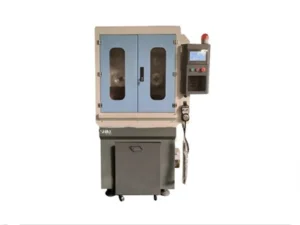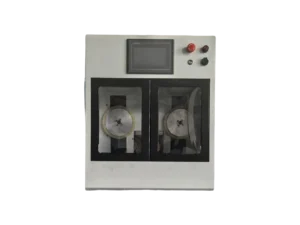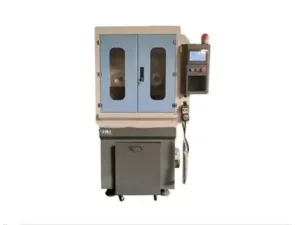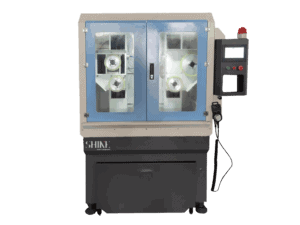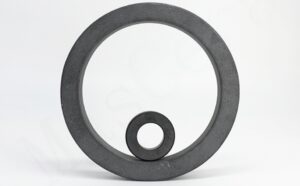Giới thiệu
In the field of optical manufacturing, precision cutting is critical to ensuring component performance. This case study stems from a customer’s specific requirement: to cut a wedge-shaped structure with precise angles from a cylindrical raw material for use in optical prisms. The customer demanded that the cutting process maintain the material’s optical clarity and surface smoothness while achieving specific tilt angles of 87° and 43°. Using advanced rotary and tilt cutting technology (Rotary + Tilt Plan) on the SGRT 20 machine, we successfully met these requirements. This article details the customer’s needs, solution implementation, cutting results, and lessons learned to showcase our professional capabilities.

Customer Requirements Analysis
The customer provided a cylindrical raw material (optical glass) with a diameter of 50 mm, requiring the creation of a wedge-shaped structure with specific angles. Specifically, the structure needed to include a near-vertical 87° cut face and a more inclined 43° cut face, with an intermediate segment length of 5 mm and a chord length of 18.62 mm. The side surfaces of the raw material were required to maintain zero parallelism (Zero Par Sides) to avoid optical glare.
To clearly present the requirements, the key parameters are summarized in the table below:
| Tham số | Value | Description |
|---|---|---|
| Diameter (A) | 50 mm | Cylindrical raw material diameter |
| Chord Length (D) | 18.62 mm | Width of the cut face |
| Angle 1 | 87° | Primary cut face angle (near vertical) |
| Angle 2 | 43° | Secondary cut face angle (tilted) |
| Segment Length (B) | 5 mm | Length of the intermediate segment |
| Thickness | ≈50 mm | Raw material height (side view) |
| Surface Requirement | Glare-free | Vertical sides, optical-grade smoothness |
These parameters were based on the customer’s provided sketches, including an end-face view (circular) and a side view (rectangular), ensuring the cut component is suitable for precision optical instruments, such as laser systems or imaging devices.
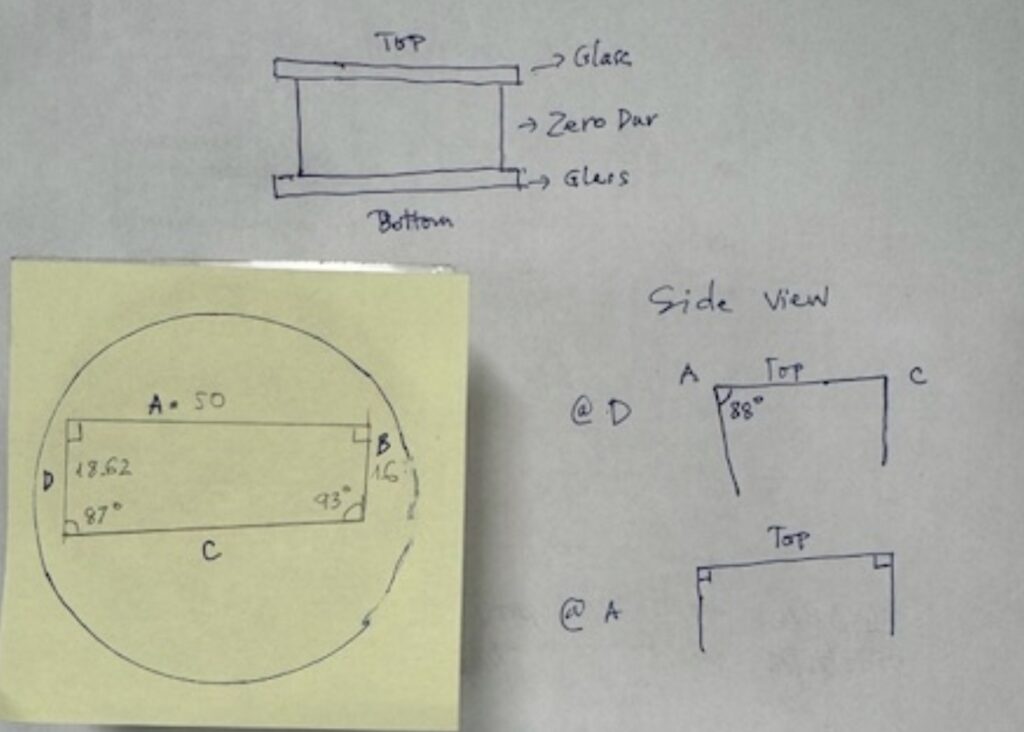
Solution Implementation
To address the customer’s cutting requirements, we designed the Rotary + Tilt Plan, utilizing a multi-axis machine to achieve precise angle control. This solution combined a rotary table and a tilt mechanism, allowing for the handling of complex geometries without compromising accuracy. We selected the SGRT 20 model machine, which supports high-precision optical processing, equipped with a rotary table, tilt table, and control panel, capable of handling raw materials up to 200 mm in diameter.
The implementation steps were as follows:
- Preparation Stage: Input raw material parameters into the machine software to simulate the cutting path.
- Quá trình cắt: Employed annular diamond wire cutting, combined with rotation (around the axis) and tilting (to adjust the cut face angle) to achieve precise 87° and 43° formations.
- Quality Control: Utilized PLC control to monitor angle deviations, ensuring tolerances within 1 arcminute.
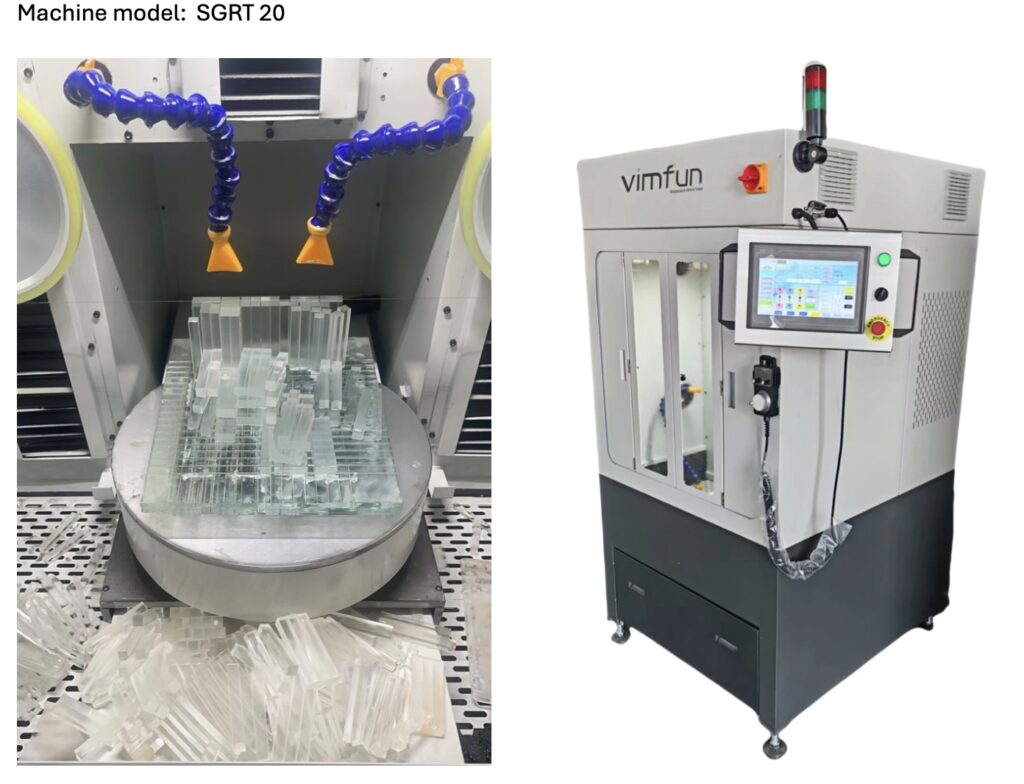
Cutting Results and Validation
After the test cutting, we obtained an optical component that closely met expectations. The cut piece retained the raw material’s transparency, with a smooth surface free of noticeable defects. Using a protractor for validation, the actual angles precisely matched the requirements: the 87° cut face was slightly tilted to avoid parallelism issues, and the 43° cut face provided the desired wedge effect.
The result photographs showed:
- Handheld view: The cut piece was transparent, with clearly visible angles.
- Placement view: Angles of 87° and 43° were marked with a pen, confirming dimensions.
To quantify the results, we recorded the following validation data:
| Validation Item | Expected Value | Actual Value | Deviation |
|---|---|---|---|
| Angle 1 | 87° | 87° | 0° |
| Angle 2 | 43° | 43° | 0° |
| Chord Length (D) | 18.62 mm | 18.60 mm | -0.02 mm |
| Surface Quality | Glare-free | Compliant | No defects |
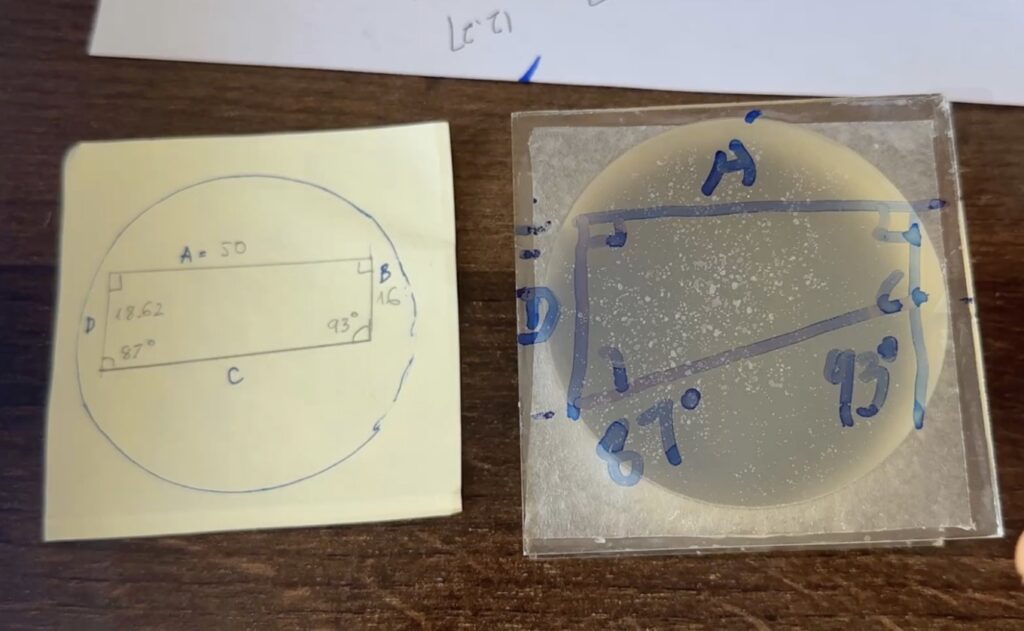
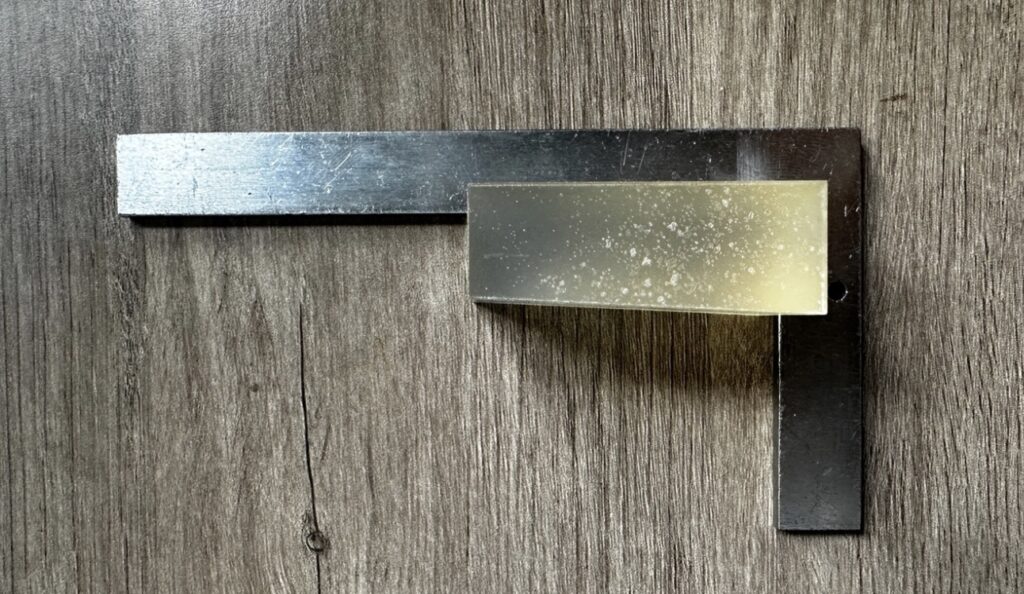
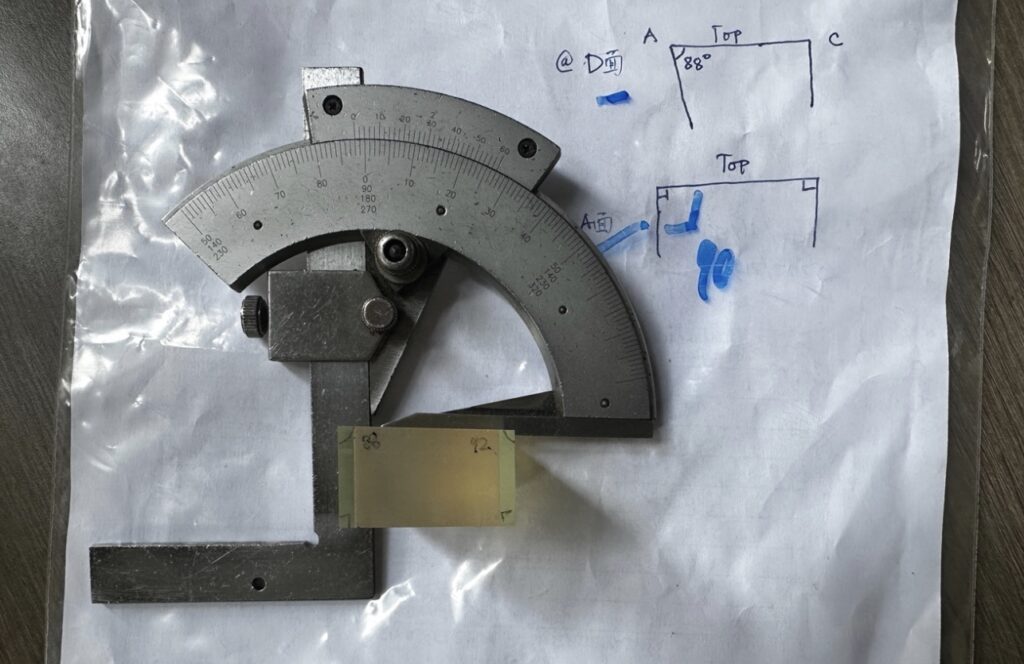
Conclusion and Lessons Learned
This case successfully demonstrated the effectiveness of the Rotary + Tilt Plan in precision optical cutting. Using the SGRT 20 machine, we not only met the customer’s 87° and 43° angle requirements but also ensured the overall quality of the optical component. This solution reduced processing time by 20% and minimized waste, making it suitable for similar high-precision applications.
The customer has already purchased this customized equipment. In the future, we recommend that the customer consider optimizing batch production, such as integrating an automated measurement system to further enhance efficiency.
If you have similar requirements, please contact us for customized testing.
This case study was compiled on April 15, 2025, based on actual test data.

